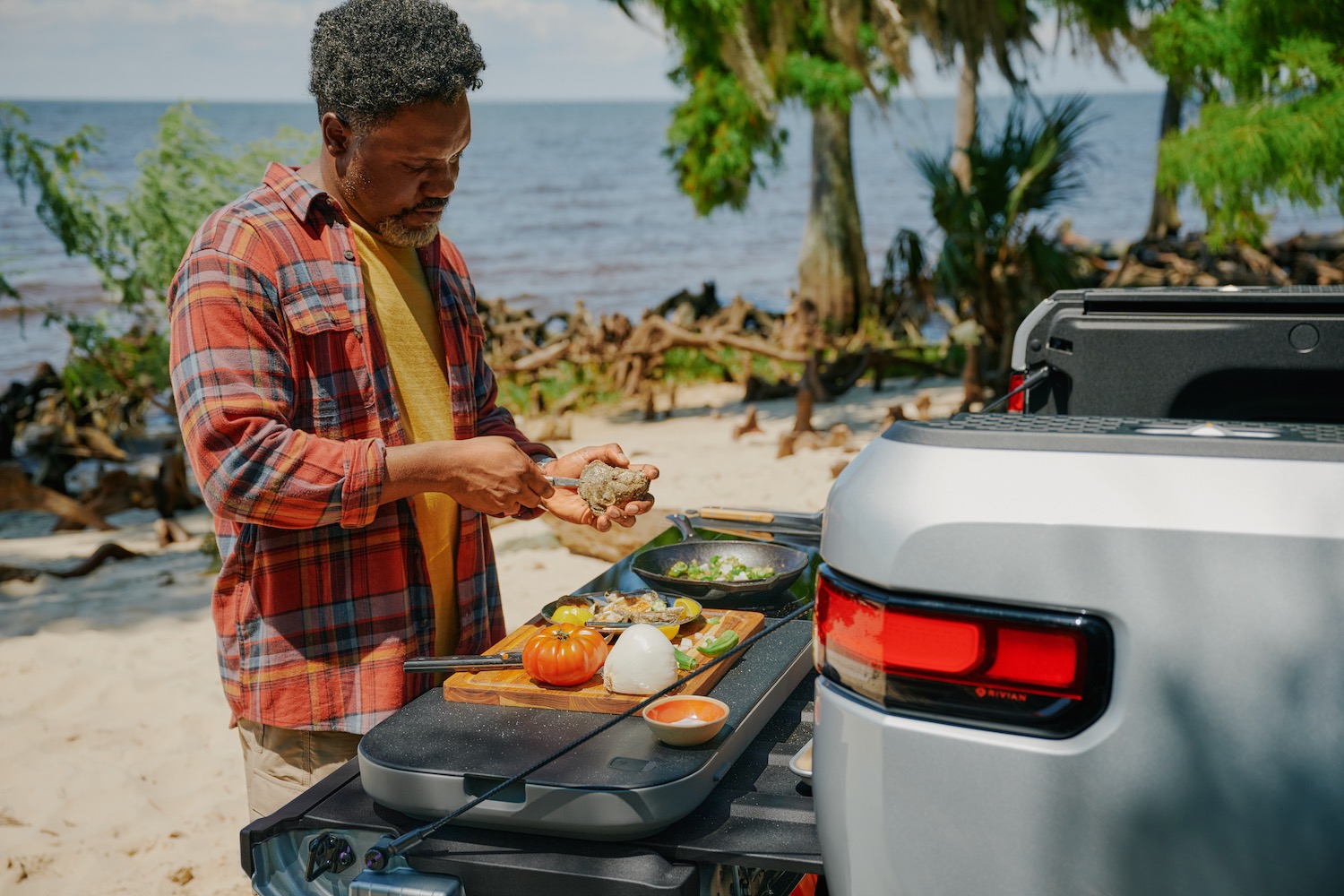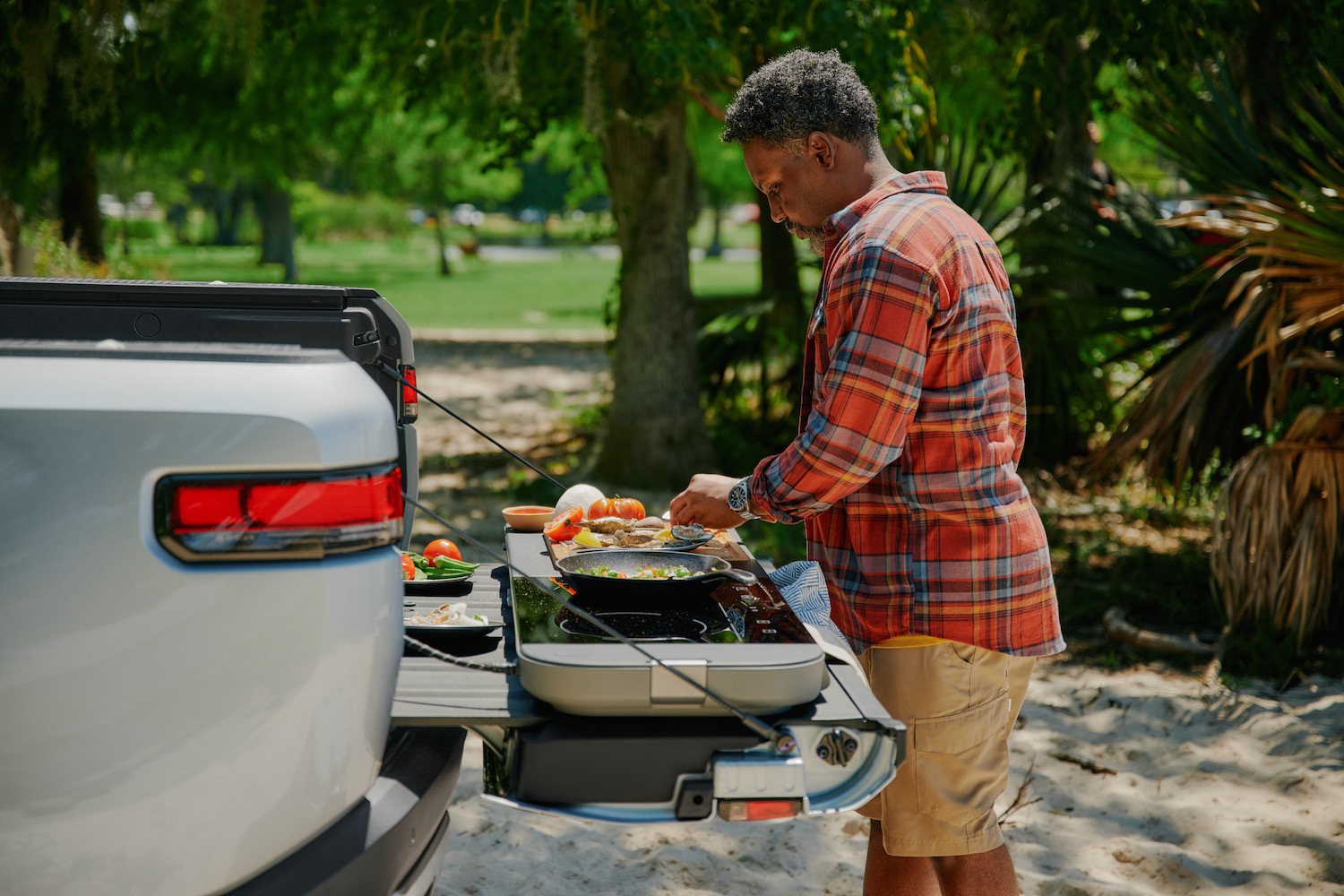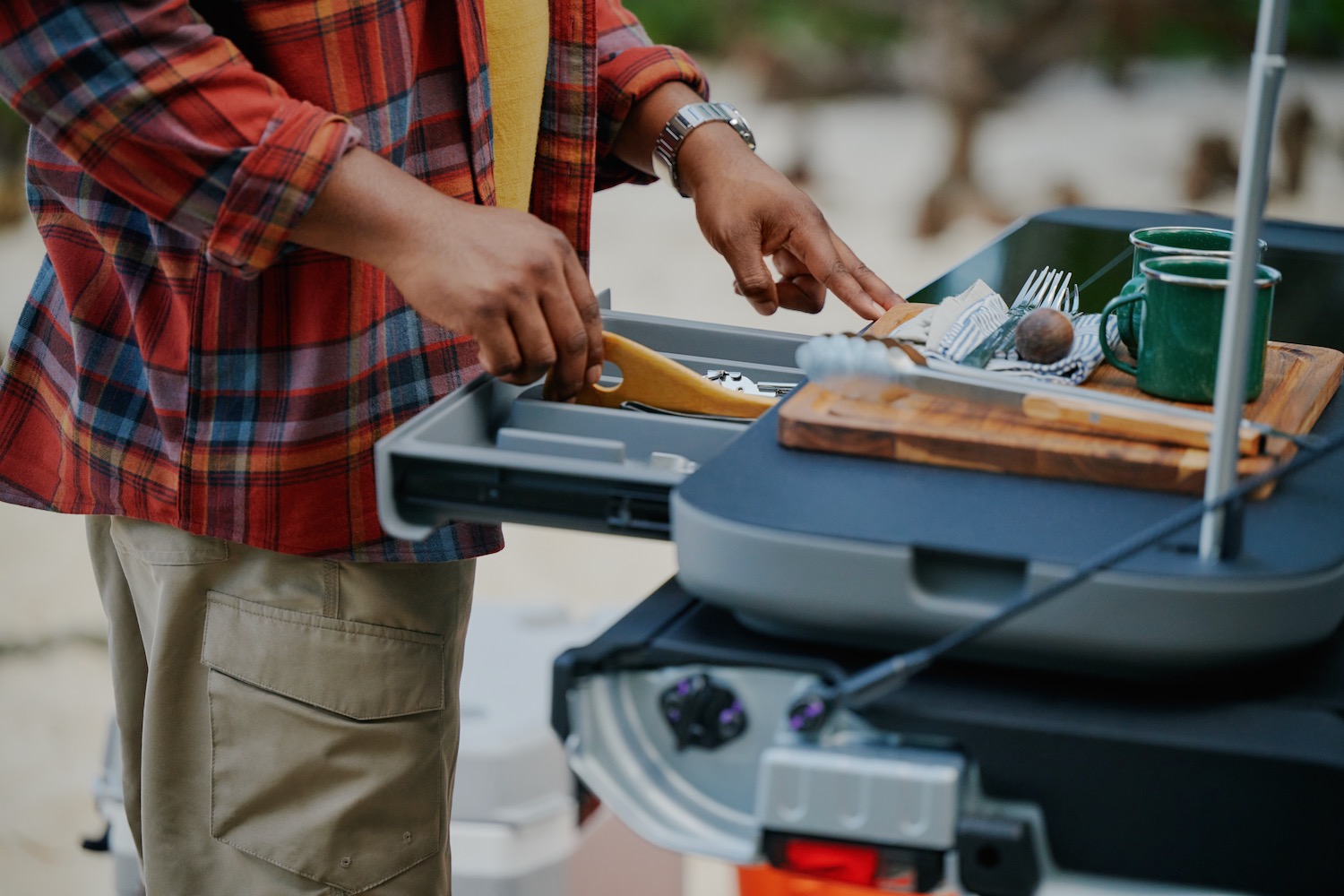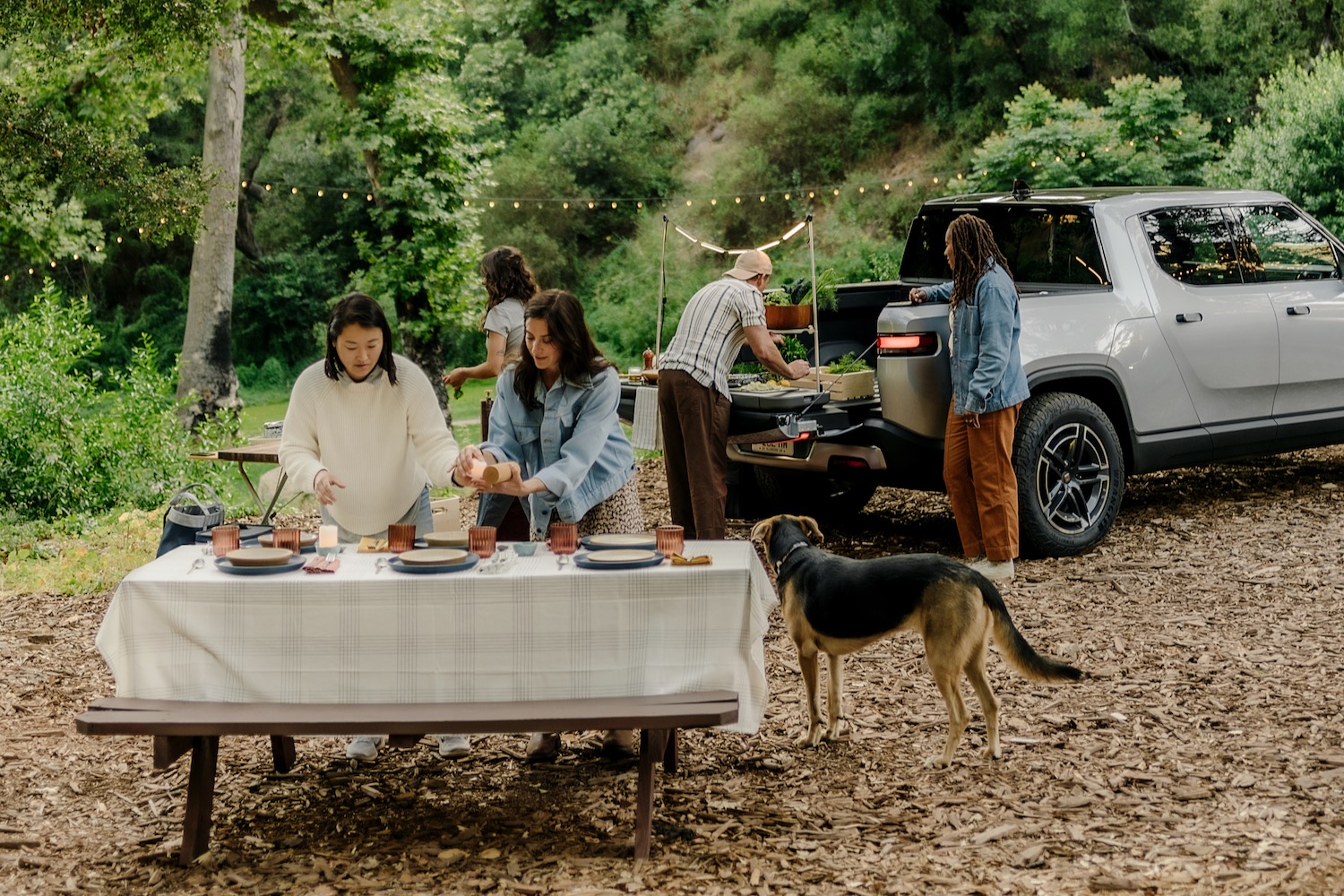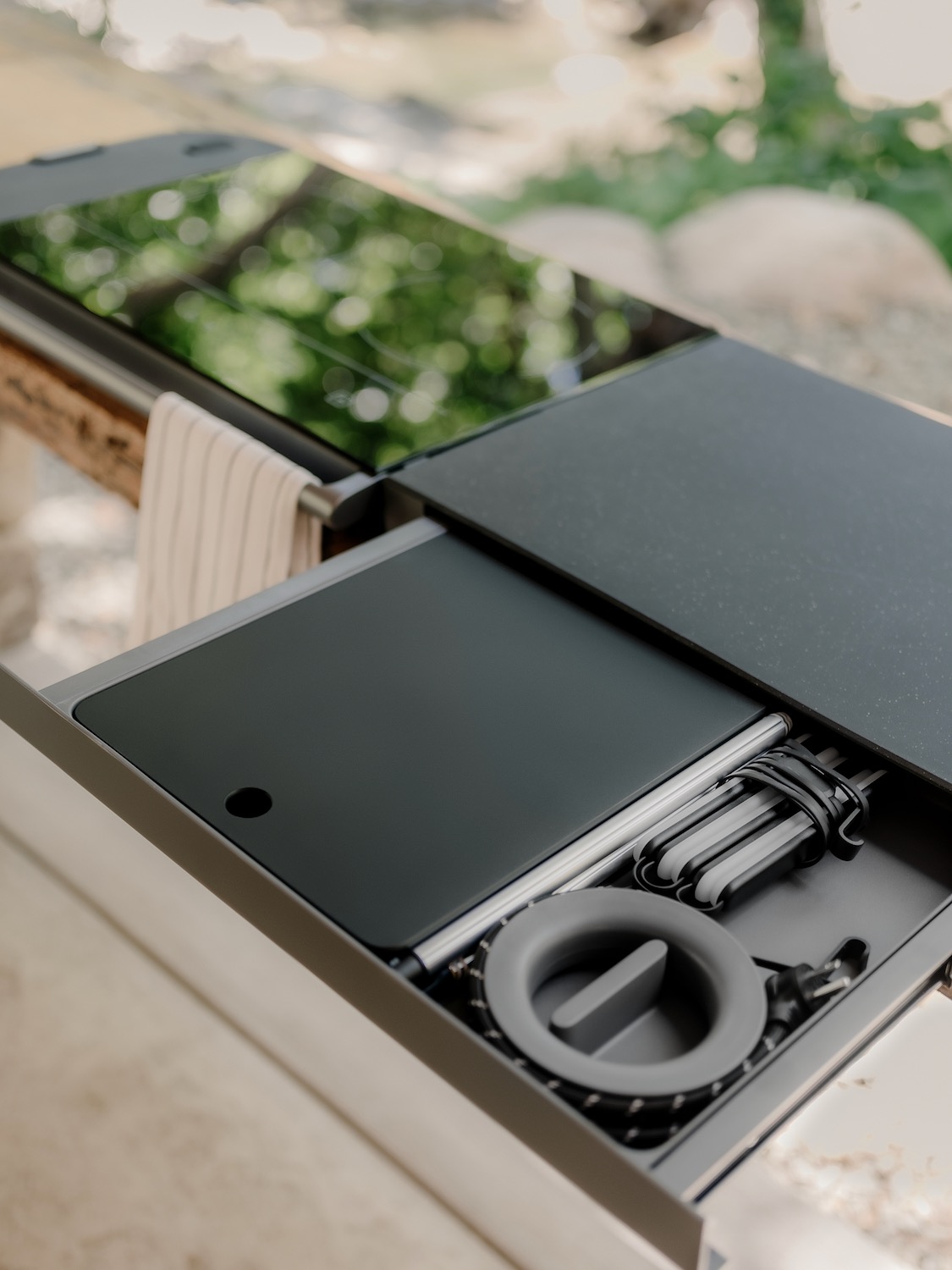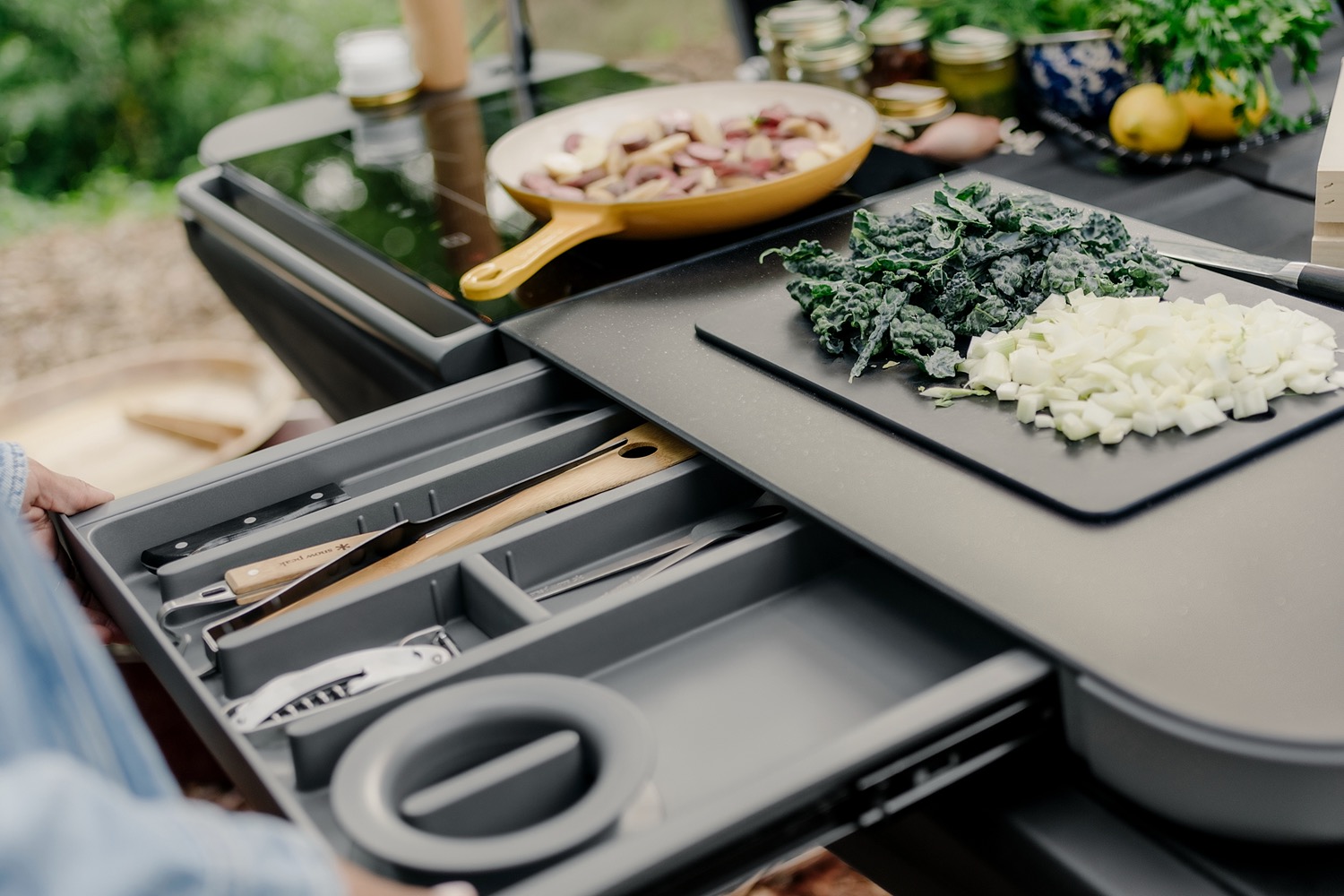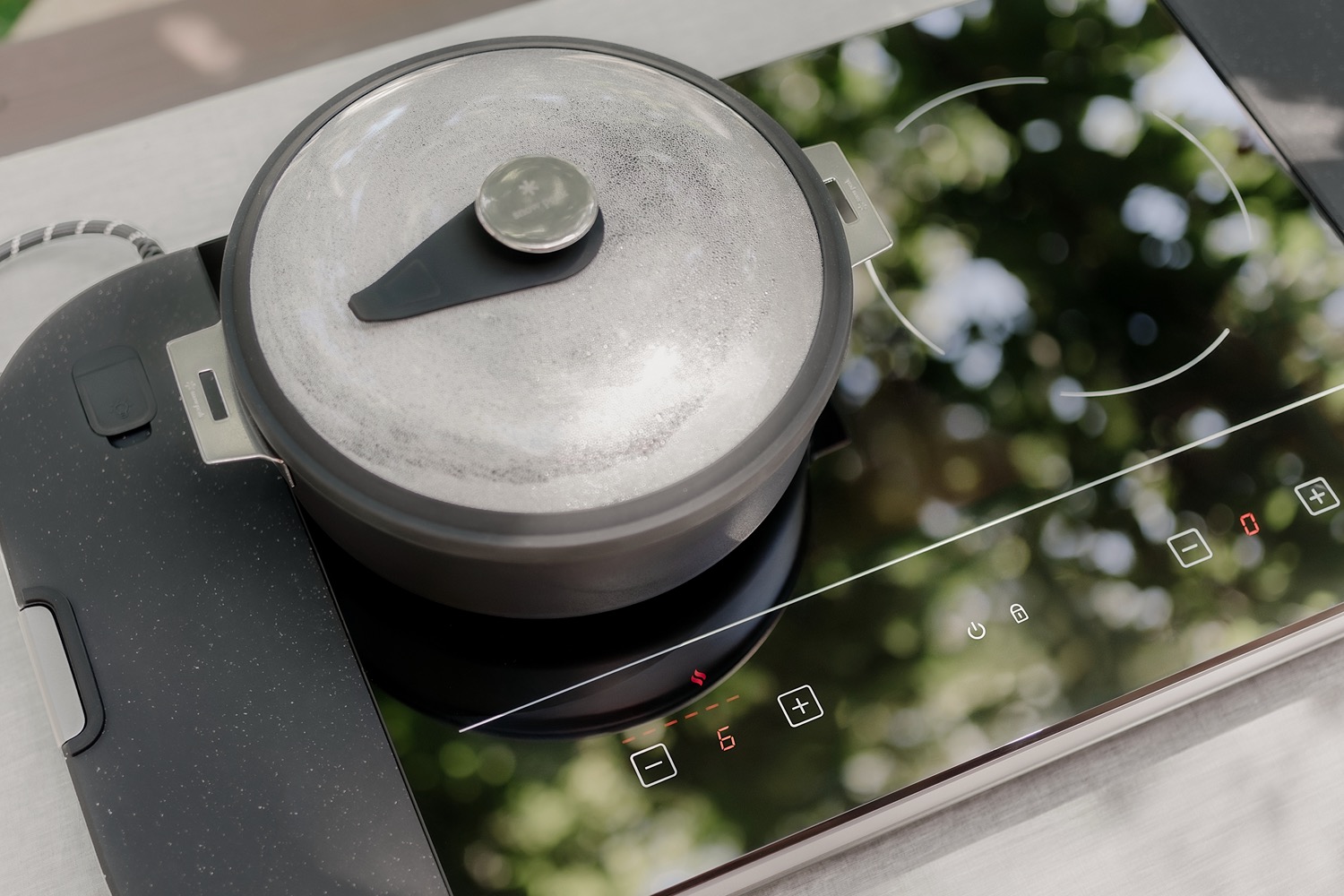Rivian is serving up a simple way to cook roadside meals. Called the Travel Kitchen, it’s powered by electrical output from R1T and R1S EV battery packs and stows onboard when not in use.
The Travel Kitchen is much simpler than Rivian’s previous culinary solution, the Camp Kitchen. That was designed to slide out of the R1T pickup truck’s Gear Tunnel pass-through, so it couldn’t be used with the R1S SUV, which lacks that feature. The Travel Kitchen, in comparison, is a slim two-burner induction cooktop designed to fold into a briefcase-size package that can be stowed in an R1T Gear Tunnel or the frunk of either model.
When unfolded, the Travel Kitchen is designed to lie flat on Rivian R1T/R1S tailgates without the need to be strapped down. It can also be used on any suitably-sized tabletop surface, according to Rivian. It can be plugged into R1 models’ built-in outlets or any 120-volt power source with 15 amps of current. The cooktop can use up to 1,500 watts to power one burner or split the power between both.
Induction burners, which transfer heat only when a compatible piece of cookware is placed on them, are better for the environment than wood or gas stoves because they don’t involve burning carbon-based fuels, Rivian notes. The lack of an open flame also reduces the risk of fire while camping.
The inside of the unit is made from castor plants for added green credibility, while an attached cutting board is made from recycled materials. Rivian also packaged a small drawer, a retractable handle that serves as a towel holder, and poles that hold a string of dimmable lights for nighttime cooking.
The Travel Kitchen costs $1,400 and is available to order now from Rivian’s website. The company plans to begin deliveries immediately.
The R1T and R1S themselves received some updates for the 2025 model year, including a tri-motor powertrain option, streamlined electrical architecture, and mild styling tweaks. Rivian aims to grow its lineup starting in 2026 with the R2 — a smaller SUV with a $45,000 base price that will significantly undercut the R1 models — followed by the R3 and R3X hatchbacks.

